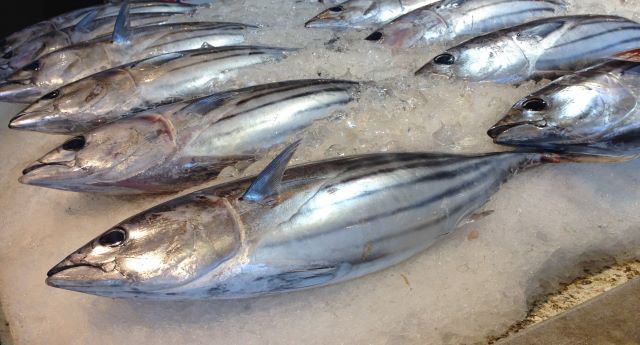
The tastiest and most highly utilized Katsuo are Ma-gatsuo and Hon-gatsuo. Anyone can tell a fish is a different species if it looks different. However, there are cases where the appearance is so similar that you can’t just inadvertently make a mistake. That is when there are several species and the difference in value is significant. In the past, the fish was used as a fish fraud, and even today it is often used as a substitute.
So, the marketer adds the prefix Hon (本) in the name of a fish or shellfish to avoid confusion with a substitute. One of the meanings of the Japanese word “hon” is “genuine,” so this may have something to do with it.
For example, Hon-zuwaigani refers to Zuwaigani, which has a shorter fishing season and a much higher price than Beni-zuwaigani. To avoid confusion with Beni-zuwaigani, which has a similar name, the Hon is added to emphasize the fact that it is Zuwaigani.
Other fish names begin with the letter Hon.
・Hon-mirugai is Mirugai clam (Mirugai). To avoid confusion with Shiro-mirugai, which was considered a substitute for Mirugai in the past, Hon is added to emphasize the fact that it is Mirugai. Recently, however, the catch of Shiro-mirugai has been decreasing, and the price of Mirugai has skyrocketed.
・There are five main types of tuna distributed in Japan, including Minamimaguro, Mebachi, Kihada, and Binnaga, of which Kuro (kuro means black)-maguro, the largest, is considered the finest. As the name suggests, half of the fish’s body is black from the back to the lateral line, so it is so-called.
About 2 million tons of tuna are caught annually worldwide, but Kuro-maguro is only about 1% of that amount. Originally, maguro meant Kuro-maguro, but other species (Mebachi, Kihada, etc.) are now distributed, and to distinguish them from Kuro-maguro, what was originally called maguro is now called Hon-maguro.
・Aka-kamasu, also called Hon-kamasu, is considered the most delicious of the kamasu family and is sold at high prices in the market. On the other hand, Yamato-kamasu, also called Mizu-kamasu, is a little less tasty, and the name seems to be used to distinguish Yamato-kamasu from Aka-kamasu.
・The official name of the family Pandalidae called Amaebi is Hokkoku-akaebi. It is widely found from the coast of Hokkaido to Toyama Bay and the eastern coast of the Korean Peninsula. It is widely found from the coast of Hokkaido to Toyama Bay and the eastern coast of the Korean Peninsula.
・Akagai is simply called Tama, Hon-dama, Hon-aka, etc. in the Toyosu market. There is also a Bachi-akagai that is very similar to the Akagai, but its real name is Satogai, which is not as red as Akagai and is smaller in size. Satogai is often mixed in with hon-dama and are called Bachi-akagai from Bachigai (it means out of place).
Finally, some seafood uses both Hon and Ma.
For example, there are four species of bonito: Katsuo, Suma-gatsuo, Marusouda-gatsuo, and Hirasouda-gatsuo. The tastiest and most highly utilized Katsuo are Ma-gatsuo (katsuo) and Hon-gatsuo (katsuo).
For your reference.